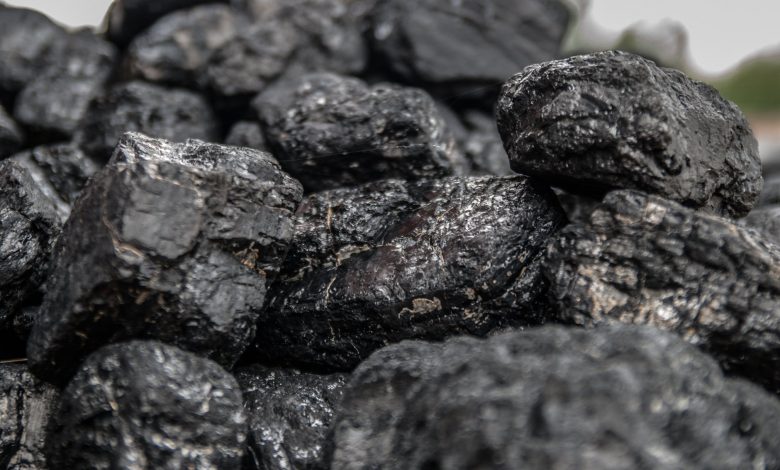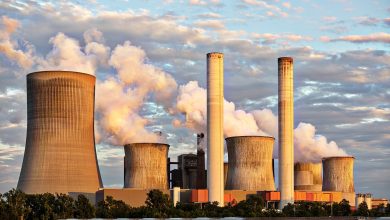Coal: The History, the Creation, and the Global Status

Fossil fuels have been powering civilizations for centuries now. The first of these fossil fuels used by humans to generate energy was coal. Coal was the first and the only fossil fuel to be used until the 1860s when the use of crude oil began. And today, although the other fossil fuels like petroleum oil and natural gas have surpassed coal in terms of global consumption, the “black diamond” continues to have a major share in the fossil fuel market.
So how is this black, rock-like fuel created, and how did humans begin to use coal as a fuel in the first place? To learn all of this and more about the creation, types, and history of coal, let’s dive deeper.
What is Coal?
Coal is a hard, rock-like combustible substance that is usually black in color and lusterless. But there are also certain varieties of coal that are found to be gray and shiny, almost looking like silver. It is made up of 65 to 95 percent carbon, along with variable amounts of other elements like hydrogen, oxygen, sulfur, and nitrogen.

How is Coal Formed?
Coal started forming more than 350 million years ago. This period is known as the Carboniferous Period. Most of the coals that we use formed from plant matter during this time. Plants growing near swamps or lakes in warm and humid climates resulted in plant matter being accumulated in these low-lying areas, which remained wet most of the time. The oxygen content of the earth’s atmosphere at that time was the highest, at 35 percent. This made the conditions perfect for the formation of vast expanses of coal beds.
Coal did not form before the Carboniferous period, and very little coal has formed after it. The reason why this period was so highly suitable for coal formation can be accredited to two conditions – the growth of wooden trees with bark and low sea levels. During this time, mushrooms and microorganisms were not yet able to decompose the large trees completely. As a result, large quantities of wood remained buried, undecomposed. The lack of air under the earth’s surface also slows down the decomposition process. The lower sea levels created a humid, swampy environment suitable for coal formation. The formation of coal from plant matter requires the climate to be warm enough for sustaining plant growth and wet enough to cause partial decomposition of the dead plants and preserve the peat.
As time went by, these buried but preserved peat went deeper and deeper under the earth’s surface as flooding of the low-lying areas deposited sediments year after year. As the plant matter got buried deeper, temperature and pressure started building up, which began to transform the matter into coal. The different stages of sedimentation undergone by the plant matter converted the cellulose in the wood from peat, to lignite, to sub-bituminous, to bituminous, and finally, to anthracite.
There has been very little, rather negligible, coal formation after the Carboniferous period. This is because the environment and climatic conditions change over time. For coal bands to form, an area must be sufficiently raised to allow plant growth and also sufficiently moist for peat to form. This is why low-lying areas near coasts or streams are places where most of the coal reserves were formed. With the rising sea levels, those areas get submerged. Also, for coal to form in elevated swamp areas, the total precipitation must exceed the total evaporation and drainage in a year, so that the requisite moisture is retained. Change in climatic conditions also affects the precipitation rate, and, in turn, affects the peat formation.
The Science Behind Coal Formation
Coal is usually formed in areas that have structures like levees or bars so that there is no frequent inundation. Also, the amount of incoming sediments should be restricted so that the peat formation is not interrupted. As plant material begins to accumulate in such areas, due to nearly stagnant waters, microorganisms attack the dead plant matter, causing partial decomposition, and forming peat. While the peat is still close to the surface, oxygen is readily available for aerobic decomposition. This partially decomposed plant matter releases gaseous and liquid products. As the peat gets buried deeper under sediments over time, the conditions become more and more anaerobic, due to the lack of oxygen. This is when the microbial activity and growth of fungi stops and coalification begins.
The quality of coal that will be formed depends primarily on three factors – duration, temperature, and pressure. Low-grade coals are formed in areas where the material isn’t buried deep enough or long enough. The best grade of coal will be the ones that have been subjected to higher pressure and temperature due to their depth and duration of being buried underground.
The process of peat getting buried under sediments and turning into coal continues as a cycle, as long as the conditions are suitable. This is why we see numerous layers of coal seams in certain sedimentary basins.
Types of Coal
The process by which something changes under the effect of pressure and temperature is known as metamorphism in geology. Coal is classified into different types based on the different stages of metamorphism undergone by it.
Peat – Peat is not coal, but a precursor to it. Peat is partially decomposed plant matter that has a carbon content less than 60 percent and is mostly made up of volatile matter. Yet it finds application in certain industries and certain regions. It was earlier used as a poor fuel for burning, in the form of dried briquettes, all over Europe. Today, it is only used in some parts of Ireland. Dehydrated peat, however, is sometimes used to soak up oil spills.
Lignite – Lignite is also known as brown coal. It is the lowest grade of coal, with a carbon content of about 65 to 70 percent. The rest of it is just volatile matter and moisture, and so it has very low heating value. Lignite is more solid than peat but still crumbles quite easily, which is why it cannot be shipped over large distances. Lignite is mostly used as a boiler fuel, exclusively for electric power generation. It is also found to be harmful to human health and is not used in households. A compact, polished form of Lignite, known as Jet, is sometimes used as an ornamental stone.
Sub-bituminous coal – This is the next highest grade of coal that has a carbon content of 70 to 75 percent. Its properties lie somewhere between those of Lignite and Bituminous coal. This grade of coal is also mostly used in industrial boilers.
Bituminous coal – Bituminous coal is a hard and dense sedimentary rock, usually black and sometimes dark brown. It has a carbon content of 70 to 86 percent. Bituminous coal is the most abundant variety of coal. It is used to make coke used in metallurgy. Byproducts of bituminous coal are also used to produce different chemicals, such as paint, nylon, and aspirin, among others.
Anthracite – Anthracite is the highest grade of coal, having around 86 to 98 percent carbon. It is usually very hard, jet-black, and has a metallic, glossy appearance. Anthracite has the highest heating value and is an excellent fuel for burning. This makes it suitable for domestic and commercial space heating.

History of Coal and Coal Mining
There is very little evidence to establish when exactly humans started using coal as a fuel. In the Americas, some of the earliest instances of the utilization of coal date back to the Aztecs, who used coal as fuel and used Jet for making ornaments. Archaeologists have also found evidence that the Romans in England started using coal in the 2nd and 3rd-century A.D.
According to historians and archaeologists, the Greek Scientist Theophrastus’ text named “On Stones” had the first written account of the use of coal in metalworking, even before the Romans became interested in the fuel. But it is also suspected that the Chinese started surface mining of coal way back in 3490 B.C. In 1215 A.D., coal began to be traded in areas of Scotland and England, where coal beds were discovered on the seashore, and hence the name, “sea coal.” This coal was not suitable for burning in the hearths of those times and was only used by artisans and metal-smiths.
During the 13th century, trading of coal in Britain increased, and by the end of the century, many of the coalfields were being worked upon on a small scale.
Early Methods of Mining
The early forms of coal mining were quite different from what we see today. Some of the common methods used in the early days were drift mining, bell pit mining, and shaft mining. In drift mining, a horizontal passageway is created, rather than tunneling downwards, running along the coal bed or an ore vein. Shaft mining made use of the “room and pillar” method. Here, the coal is excavated from horizontal beds, creating rooms where it is dug out, while some of the material is left untouched to form pillars that can support the roof of the mine. The early methods rarely ever exhausted the resources of a mine.
How is Coal Mined?
If the coal is not buried too deep under the earth and is present near the surface, surface mining is the easiest way to dig it up. Huge machines are used today to first scrape away the rocks and dirt and then dig out the coal from the coal beds. Once the coal is mined, the dirt and rock can be put back in the mine and plantation can be done on the soil. This is known as reclamation. This makes the land usable again and minimizes the impact on the environment.
When the coal is buried deep underground, surface mining cannot reach the coal beds. In such cases, tunnels known as mine shafts are dug deep into the earth up to the coal bed. The coal is dug and carried to the surface. This is mostly done by machines nowadays. This method is known as deep mining. Some of these mine shafts can even be 1,000 feet deep.
The coal is carried out of the mines in small coal cars or conveyor belts and loaded into trucks. The coal is then crushed into smaller pieces to make it suitable for shipping. Smaller pieces are also easier to burn, and this also helps get rid of incombustible material attached to the coal, making it clean. The processed coal is then transported by rail, road, or waterways. In fact, coal can also be transported through pipelines. The crushed coal is mixed with water or oil to create a slurry and sent through pipelines to industrial users.
The Industrial Revolution
The importance of coal rose in the 19th and 20th centuries during the Industrial Revolution. It began in Britain in the 18th century and quickly spread to other nations and continents like Europe, North America, and Japan. The Revolution itself was based on the availability of coal and its potential to power steam engines. The Victorian era saw the use of coal-powered steam engines in railways and steamships, which expanded international trade beyond horizons. Coal was also found to be cheaper and much more efficient than wood as a fuel.
Coal was abundant in Britain, as many coal fields were present in Central and Northern England, Scotland, and South Wales. The older, small-scale methods of coal mining were no longer good enough to meet the increasing demand. With the expansion of the Industrial Revolution, mining methods evolved, from the shallow surface mining techniques to deeper shaft mining. A major portion of coal was required for fueling the steamships that traveled from the industrialized parts of Europe to other nations. This increase in consumption of coal led to mining for coal in various places all across the world. Wherever these steamships arrived for trade, it became necessary to look for coal. And places that had coal beds were bound to be mined for more.

Coal Mining in Great Britain
Deep mining for coal in Britain gained momentum in the latter part of the 18th century. Before that, deep mining also took place from as early as the 1500s, but very rarely. Coal mining brought great wealth to places like Lancashire, Yorkshire, and South Wales, as most of the coal beds were found in and around these places. The primitive methods of mining had left large reserves of coal untapped in many places. To get more out of these mines, many innovations were made, such as wooden props to support the roof of the mine, the Davy lamp and the Geordie lamp for the safety of miners, and steam engine-driven fans to circulate air inside the mines.
After the 1900s, coal did not just become an irreplaceable resource but also became a political issue in Britain. Mineworkers started forming unions to speak up against the conditions in which they worked and how they were treated by the owners. Throughout the 19th and 20th centuries, new technologies were developed to improve the safety of miners and increase the productivity of the mines. In the late 20th century, coal began to be used for electricity generation, which helped it maintain its relevance despite the surfacing of many other energy sources.
Coal Mining in the United States
In the U.S., anthracite, which is the best grade of coal – clean and smokeless – replaced wood as a fuel by 1850. Pittsburgh was the major market for coal in the country. Soft coal, which is cheaper but also dirtier and less efficient than anthracite, began to be used in locomotives and stationary steam engines after 1850. After 1870, it was also in demand in the steel industry in the form of coke.
The total output of coal kept on increasing until 1918. In fact, the production of coal doubled every year for ten years until 1890. But the Great Depression in the 1930s drastically lowered the demand for coal. Around 1970, steam engines were phased out in the railways and industries, which meant the coal being used to power steam engines in these fields was no longer needed. Bituminous coal was now used only for electricity generation.
As coal mining became more mechanized and advanced, the number of miners working in the mines drastically reduced. From 160,000 members of the United Mine Workers in 1980, the numbers dropped to only 16,000 in 2005.
Current Scenario
In 2010, the estimated contribution of coal to energy production globally was 25 percent. This share is expected to rise further to 33 percent by the year 2050. The world production of steel depends on the burning of coal by almost 70 percent. The largest reserves of procurable coal, as of 2018, lies with the United States. It has a share of nearly 24 percent of the world’s total proven reserves. It is followed by Russia, which has a share of 15.2 percent of the world total.
In terms of consumption, China’s power sector is the largest user of coal in the world.
According to IEA, the global coal demand, after seeing a decline for two years, has again started rising in 2017. And this demand is expected to be stable through 2023.



